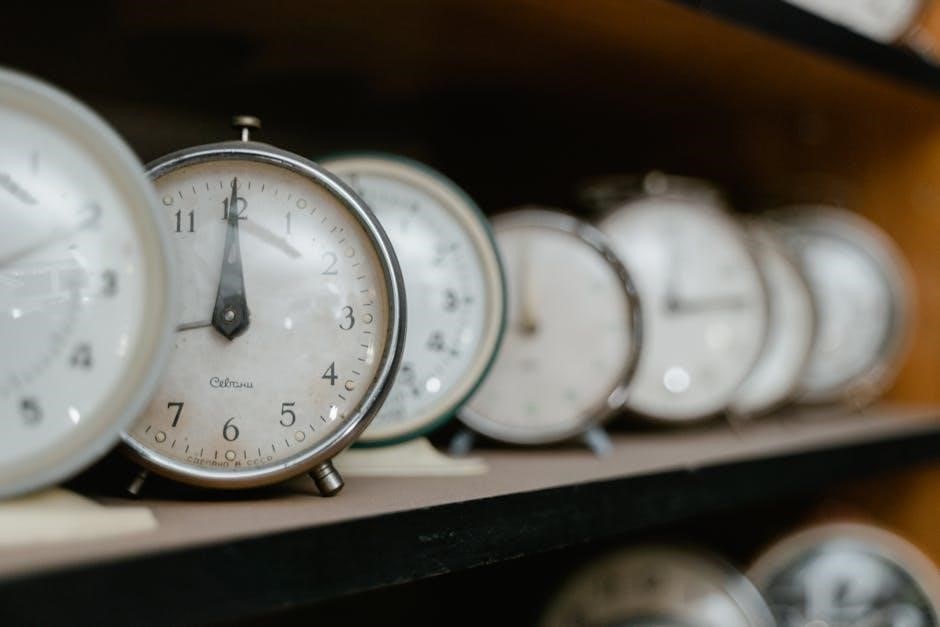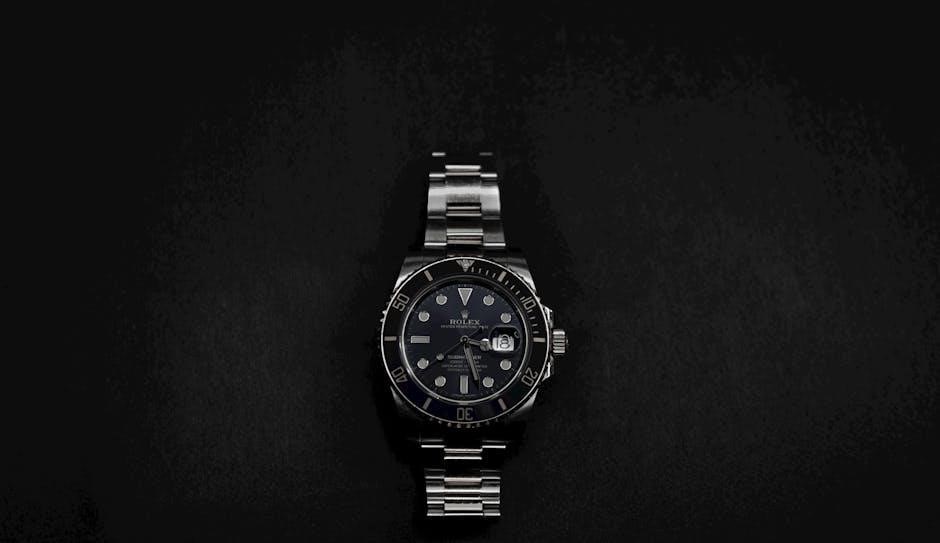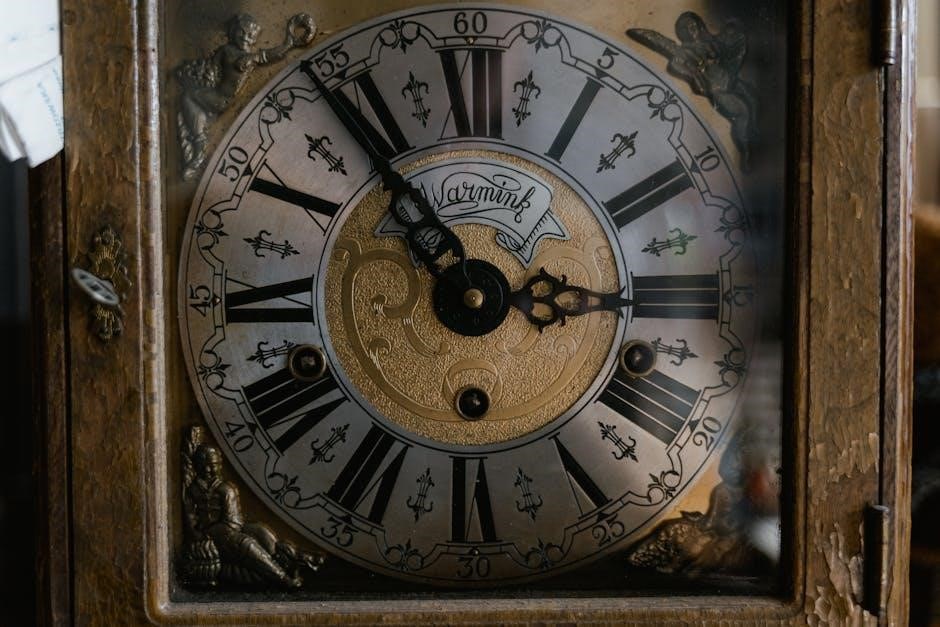A 24-hour urine collection measures kidney function by analyzing all urine produced over a full day. It helps diagnose medical conditions and monitor treatment effectiveness accurately.
Overview of the Test
A 24-hour urine collection is a diagnostic test that involves gathering all urine produced over a 24-hour period. It provides a comprehensive assessment of kidney function, helping to identify conditions like kidney disease or hormonal imbalances. The test requires precise collection and storage of urine samples to ensure accurate results. Unlike random or single-sample tests, it offers a detailed view of urinary output and substance excretion over a full day, enhancing diagnostic reliability and precision.
Importance of Accurate Collection
Accurate 24-hour urine collection is crucial for reliable test results. Missing samples or improper storage can lead to incorrect measurements, potentially causing misdiagnosis or unnecessary repeat testing. Precise collection ensures that the levels of substances like creatinine, protein, or hormones are accurately measured, providing a clear picture of kidney function and overall health. Strict adherence to instructions is essential to avoid errors and ensure the test’s validity.

Preparation for the 24-Hour Urine Collection
Start with an empty bladder, collect all urine for 24 hours, and store it properly. Ensure the container is labeled and kept cool throughout the process.
Materials Needed
To perform a 24-hour urine collection, you will need a large, clean container with a tight-fitting lid, an ice pack or refrigerator for storage, and a label to mark your name and collection times. A secondary container may be provided if the primary one is not large enough. Ensure all materials are ready before starting to avoid missing any samples during the collection period.
Labeling the Collection Container
Properly label the collection container with your full name, the start date and time, and the end date and time. This ensures accurate identification and processing of your sample. Use the labels provided or write clearly with a permanent marker. Double-check the information for accuracy before beginning the collection process to avoid any mix-ups or delays in testing.

Starting the 24-Hour Urine Collection
Begin by emptying your bladder in the morning, but do not save this initial sample. Record the exact start time to mark the beginning of the collection period.
Emptying the Bladder at the Start Time
Begin the collection by emptying your bladder completely in the morning. This initial urine sample should be discarded and not included in the collection. Wash your hands thoroughly before starting. After voiding, immediately begin the 24-hour collection process, ensuring all subsequent urine is saved. This step ensures the collection starts accurately, providing a clear baseline for the test.
Documenting the Start Time
After emptying your bladder at the start time, immediately record the exact date and time. This marks the beginning of the 24-hour collection period. Write the start time on the collection container or the provided documentation form. Accurate documentation ensures the collection period is correctly tracked, which is crucial for obtaining valid test results. Failure to document the start time may result in an incomplete or inaccurate collection.
Collecting Urine During the 24-Hour Period
Collect all urine passed during the 24-hour period in the provided container. Include both daytime and nighttime collections to ensure accurate test results.
Collecting All Urine Samples
It is crucial to collect every urine sample passed during the 24-hour period, including nighttime voidings. Use the provided container exclusively for this purpose. Failure to collect any sample may result in inaccurate test results, potentially requiring the collection process to be repeated. Ensure all urine is saved to guarantee reliable diagnostic outcomes.
Storing the Collection Container
Store the collection container in the refrigerator or on ice to prevent bacterial growth and maintain sample integrity. Keep it upright in a cool, dark place to avoid direct sunlight. Do not allow the container to freeze. Proper storage ensures accurate test results. If you have concerns about storage, consult your healthcare provider for guidance.
Completing the 24-Hour Urine Collection
At the 24-hour mark, urinate into a separate container and add it to the main collection. Document the end time for accuracy. Ensure no urine is missed.
Final Urine Sample
At the end of the 24-hour period, urinate into a separate container and add it to the main collection. This ensures the sample represents a complete 24-hour cycle. Document the exact time of the final collection to maintain accuracy. Failure to include the last sample may result in incomplete test results. Ensure the final urine is poured into the main container before sealing it for submission to the laboratory.
Documenting the End Time
Record the exact time and date when the 24-hour collection ends. This step ensures the sample represents a complete cycle. Write the end time on the collection container and in your documentation. Accurate timing is crucial for precise test results. Failure to document the end time may require repeating the collection process. Ensure the recorded end time matches the start time plus 24 hours to maintain the integrity of the sample for laboratory analysis.
Handling and Transportation of the Sample
Keep the 24-hour urine sample refrigerated during transport to maintain integrity. Deliver it promptly to the lab to avoid degradation and ensure accurate test results.
Keeping the Sample Cool
Store the 24-hour urine collection container in a refrigerator or on ice during the collection period to prevent bacterial growth and preserve sample integrity. Avoid direct sunlight and extreme temperatures, as this can alter test results. Ensure the container remains upright and tightly sealed to maintain sample consistency and accuracy for laboratory analysis.
Delivering the Sample to the Laboratory
After completing the 24-hour collection, transport the sample to the laboratory promptly. Ensure it arrives within two hours of the final urine collection. Keep the container cool during transport, using ice packs if necessary. Avoid delays, as timely delivery is crucial for accurate test results. Follow any specific instructions provided by your healthcare provider or laboratory for handling and submission.
Common Mistakes to Avoid
Forgetting to collect all urine samples and incorrect storage or handling are frequent errors. These mistakes can lead to inaccurate test results, requiring re-collection.
Forgetting to Collect All Urine Samples
One common mistake is forgetting to collect every urine sample during the 24-hour period. This includes both daytime and nighttime voiding. Failing to do so leads to incomplete data, making test results unreliable. Patients must remember to collect all urine, even if it means interrupting sleep or daily activities. Missing even one sample can compromise the accuracy of the test, potentially requiring the collection process to be repeated. Consistency and diligence are crucial to ensure valid results.

Incorrect Storage or Handling
Improper storage or handling of the urine sample can lead to inaccurate test results. The collection container must be kept refrigerated or on ice throughout the 24-hour period to preserve the sample. Direct sunlight, heat, or failure to seal the container tightly can cause degradation or contamination. Always follow the provided storage instructions to ensure the integrity of the sample for reliable test outcomes. Proper handling is essential for accurate analysis.
Dietary and Lifestyle Considerations
Diet and lifestyle factors can influence 24-hour urine test results. Avoid excessive caffeine, alcohol, and certain medications as they may alter findings. Maintain normal activities and hydration levels to ensure accurate measurements. Consistency in diet helps minimize variations in test outcomes. Inform your healthcare provider of any supplements or medications being taken to prevent interference with results.
Impact of Diet on Test Results

Diet plays a significant role in 24-hour urine test accuracy. Consuming foods high in protein or excessive caffeine and alcohol can alter results. Certain medications and supplements may also affect outcomes. Maintaining a consistent diet before and during collection is crucial to avoid variations. Avoiding specific foods or substances as advised by your healthcare provider ensures reliable test results. Dietary inconsistencies can lead to inaccurate measurements of substances like creatinine or protein levels.
Activities to Avoid During Collection
During the 24-hour urine collection, avoid strenuous exercise, excessive fluid intake, and sexual activity, as these can alter urine composition. Refrain from using catheters or other devices that might result in urine loss. Avoid consuming alcohol or medications not approved by your healthcare provider, as they may affect test accuracy. Maintaining normal daily activities and hydration levels is essential for reliable results. Adherence to these guidelines ensures accurate test outcomes.

Troubleshooting Issues During Collection
If a urine sample is missed, document the occurrence and continue collecting. For spills or leaks, clean up immediately and transfer remaining urine to a new container.

What to Do If You Miss a Sample
If you miss collecting a urine sample, document the time and circumstance. Continue the collection process without delay. For spills or leaks, clean up immediately and transfer any remaining urine to a new container. Ensure all subsequent samples are collected accurately to maintain the integrity of the test. Notify your healthcare provider if the issue persists or significantly impacts the collection process.
Addressing Leaks or Spills
If a leak or spill occurs during collection, act immediately to prevent sample loss. Clean the area thoroughly and transfer any remaining urine to a new container. Securely tighten all lids to avoid further spills. Document the incident and notify your healthcare provider if a significant amount of urine is lost. Continue the collection process to ensure accurate results, as stopping may require repeating the test;
